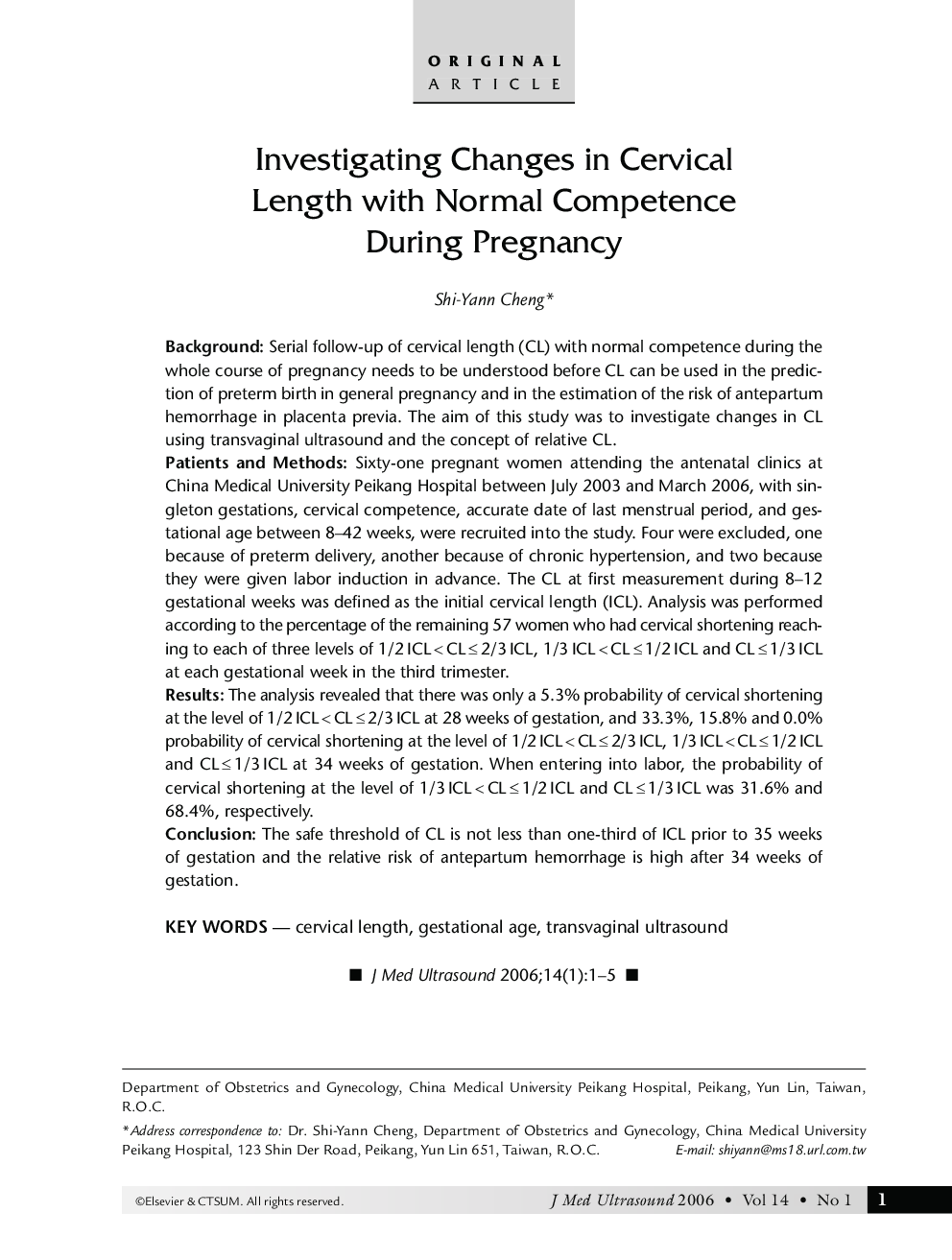| Article ID | Journal | Published Year | Pages | File Type |
|---|---|---|---|---|
| 4233413 | Journal of Medical Ultrasound | 2006 | 5 Pages |
BackgroundSerial follow-up of cervical length (CL) with normal competence during the whole course of pregnancy needs to be understood before CL can be used in the prediction of preterm birth in general pregnancy and in the estimation of the risk of antepartum hemorrhage in placenta previa. The aim of this study was to investigate changes in CL using transvaginal ultrasound and the concept of relative CL.Patients and MethodsSixty-one pregnant women attending the antenatal clinics at China Medical University Peikang Hospital between July 2003 and March 2006, with singleton gestations, cervical competence, accurate date of last menstrual period, and gestational age between 8—42 weeks, were recruited into the study. Four were excluded, one because of preterm delivery, another because of chronic hypertension, and two because they were given labor induction in advance. The CL at first measurement during 8—12 gestational weeks was defined as the initial cervical length (ICL). Analysis was performed according to the percentage of the remaining 57 women who had cervical shortening reaching to each of three levels of ½ ICL < CL ≤ 2/3 ICL, 1/3 ICL < CL ≤ ½ ICL and CL ≤ 1/3 ICL at each gestational week in the third trimester.ResultsThe analysis revealed that there was only a 5.3% probability of cervical shortening at the level of ½ ICL < CL ≤ 2/3 ICL at 28 weeks of gestation, and 33.3%, 15.8% and 0.0% probability of cervical shortening at the level of ½ ICL < CL ≤ 2/3 ICL, 1/3 ICL < CL ≤ ½ ICL and CL ≤ 1/3 ICL at 34 weeks of gestation. When entering into labor, the probability of cervical shortening at the level of 1/3 ICL < CL ≤ ½ ICL and CL ≤ 1/3 ICL was 31.6% and 68.4%, respectively.ConclusionThe safe threshold of CL is not less than one-third of ICL prior to 35 weeks of gestation and the relative risk of antepartum hemorrhage is high after 34 weeks of gestation.
